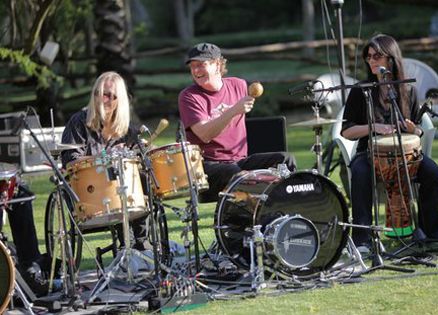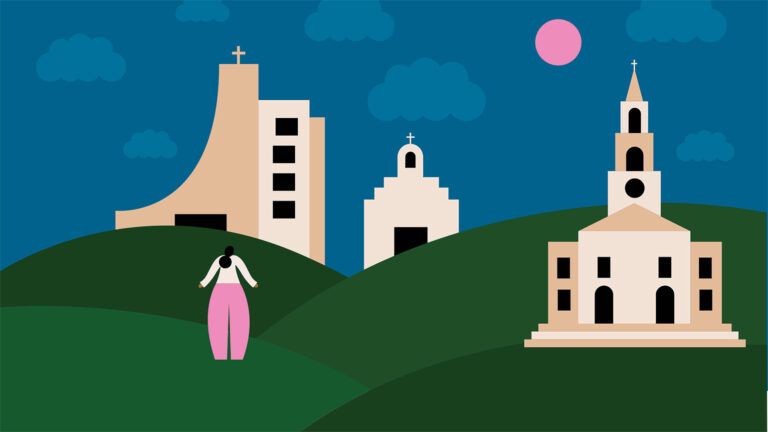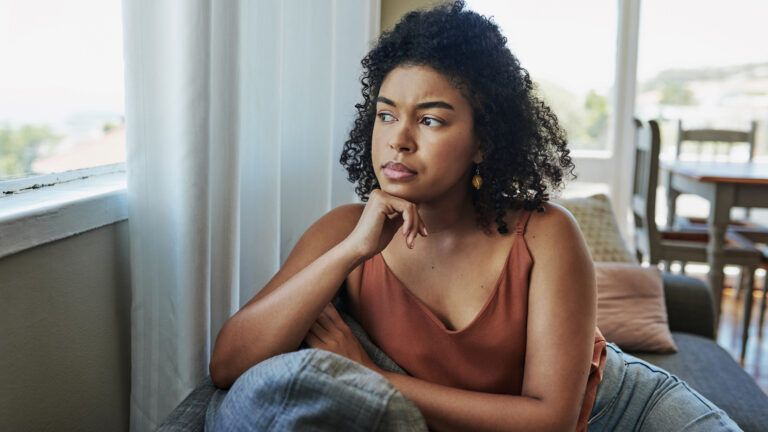I walked into the hospital with one thought continually racing through my mind: What would I say to them?
I’d gotten a call just a few weeks before from a representative for the USO (United Service Organizations). “We’ve heard about your inspiring story,” the man said. “We’d like you to come to Walter Reed Hospital and visit with some of the soldiers who’ve been injured in combat. Maybe you could help them get through it.”
My “inspiring story” hadn’t felt so inspiring back in 1984 when I’d made headlines: DEF LEPPARD DRUMMER LOSES ARM IN AUTOMOBILE CRASH.
I hadn’t lost my arm in any act of bravery. I’d been driving too fast on a winding road, thinking—like most 21-year-olds—that I was invincible. I’d eventually learned to drum again with only one arm, and our band had gone on to even greater success than before the accident.
And while a lot of fans and critics had thought my continuing to “rock on” in spite of missing an arm had been cool, I’d never met a war hero before. They were so out of my league—they’d risked their lives for their country. Maybe these guys who’d been injured in combat would resent my coming in and telling them everything would be OK. After all, who did I think I was?
My first few minutes at the hospital weren’t as tough as I’d expected. The soldiers seemed to get a kick out of meeting a rock star. I signed autographs and took pictures. Some of the guys in hospital beds told me about their favorite Def Leppard songs, mimed beating a drum while they imitated the sound of crashing cymbals.
“I can’t wait to tell my buddies I met you.” one said; “Wait until I show this picture to my wife!” another shouted, shaking my hand. Then the hospital administrator said, “We’d like you to meet Harris*. He lost an arm in combat.” I took a deep breath, and my wife Lauren and I followed him to Harris’s room.
Harris’s injury wasn’t the first thing I noticed about him. It was that big, black cloud that hung over him that got my attention. I looked at Lauren. She didn’t say a word but her eyes urged me forward.
“Hi, I’m Rick Allen,” I said to Harris. He nodded, never looking up. Now what?
I sat down by his bed. A few minutes went by in complete silence. It was so awkward, it felt like hours. Eventually, Harris looked at me—and I realized that words weren’t necessary. There was a knowing, a camaraderie. A tear ran down Harris’s cheek. “I know, man,” I said. “I know.”
Harris and I talked for a long time about the loss, the fear, the helplessness. I told him how humiliated I’d felt when I first lost my arm, how my older brother Rob had become my babysitter—feeding me, bathing me, brushing my teeth, everything—until I could do simple everyday tasks.
“You’ll learn new ways to do things,” I promised Harris. “And I’m going to help you.”
I’d made a promise to Harris, and I intended to keep it. Only problem was, I didn’t know how. Lauren and I talked about it that night. “What brought you back was the drumming,” she reminded me.
It was true. I had lain there helpless until I’d found myself drumming out rhythms with my feet. Rob had brought in a stereo, and I’d pounded out rhythms on a piece of foam at the foot of the hospital bed. Then an engineer friend designed a special drum kit for me that allowed me to play with one arm and my legs. Learning to drum that way had required intense focus and concentration and had taken me away from focusing on what I couldn’t do anymore. Maybe Harris and the other veterans could do the same thing.
The next day, I called the USO. They directed me to something called the Wounded Warrior Project, a group dedicated to helping injured veterans heal both physically and mentally. Soon, Lauren and I started leading drum circles for the Project.
Drum circles are a rhythm-based group therapy using meditation and guided imagery. They’re not like what we rockers call “jamming.” In a drum circle, we introduce rhythms with the intention of releasing pain. With each rhythm, the vets are guided in how to breathe and how to experience their bodies in a certain way. Then we have both silent and sharing times. Therapists are on hand to help the soldiers talk through their frustrations. You’d be surprised how many of them are finally able to open up after experiencing the drum circles. It’s like they’re finally able to grab on to something that pulls them out of their isolation and grief.
From my own experience, I’ve learned that the human spirit needs only a spark to be reignited after a loss. Helping to find that spark for these soldiers has been one of the greatest honors of my life.
Harris participated in a couple of our drum circles and introduced me to other Wounded Warriors that have since come to The Raven Drum Circles to experience healing. We’d talk about how we’d swear the elbow itched on our missing arm (the docs call that “phantom limb syndrome”). We’d even make jokes: With my left arm and Harris’s right arm missing, we’d stand side-by-side and tell the group we were bookends. That always got a laugh. Over time, the black cloud over his head became a little grayer until it eventually faded away.
I ran into Harris not too long ago at a get-together in Los Angeles. You wouldn’t recognize him from the guy he was in the hospital that day. He was the picture of health and about to participate in a 130 mile bike ride down the coast to San Diego. The only thing that hadn’t changed was that his missing arm still isn’t the first thing you’d notice about him. His broad smile and enthusiasm for life stand out far more.
The USO had asked me to inspire the soldiers, but working with the Wounded Warrior Project inspired me beyond anything I could ever have imagined. It’s not some photo opp for me, some new ROCK STAR VISITS VETERANS headline. Instead, it’s this fantastic two-way street. I’ve learned so much about what the men and women of the armed forces do. I didn’t realize before that some of the amputees actually go back to active duty. That, to me, is off the chart! How can anyone not admire that level of dedication? The Wounded Warrior Project has given me a chance to do something to help the people who protect all of us, and I’ve gotten to meet all these heroes I wouldn’t otherwise have met.
And for me, meeting a soldier is like…well, I guess you might say it’s like meeting a rock star.
Download your FREE ebook, True Inspirational Stories: 9 Real Life Stories of Hope & Faith





